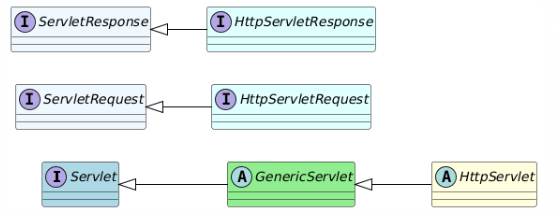The Servlet API: Foundation of Java Web Development
Hello everyone! As we delve deeper into building dynamic web applications with Java, it becomes essential to explore the core framework that enables this functionality. This brings us to The Servlet API, a fundamental collection of Java classes and interfaces that serves as the backbone for creating robust and scalable server-side web components. Understanding this API is paramount for any developer working with Servlets, as it provides the essential tools to handle client requests and generate dynamic responses.
What is The Servlet API?
The Servlet API (Application Programming Interface) is a standard set of interfaces and classes provided by the Jakarta EE (formerly Java EE) platform. It defines the contract between a Servlet and the Servlet container. Essentially, it provides all the necessary tools for developers to write Servlets that can receive client requests, process them, and send responses back to the client. This powerful API abstracts away much of the low-level network programming, allowing developers to focus on the business logic of their web applications.
The Servlet API is instrumental in managing the Servlet lifecycle and enabling communication between the web server, the Servlet container, and your custom Servlet code. Therefore, a solid understanding of its components is crucial.
Key Packages of The Servlet API
The Servlet API is primarily composed of two core packages that contain the essential classes and interfaces for Servlet programming:
javax.servlet:- This package contains generic, protocol-independent Servlet interfaces and classes. It defines the fundamental contract for Servlets regardless of the underlying protocol (though it’s most commonly used with HTTP).
- Key components in this package include:
Servlet(Interface): The central interface that all Servlets must implement. It declares theinit(),service(), anddestroy()methods that govern the Servlet’s lifecycle.GenericServlet(Abstract Class): This abstract class provides a basic implementation of theServletandServletConfiginterfaces. It’s useful for creating protocol-independent Servlets, thoughHttpServletis typically preferred for web applications.ServletConfig(Interface): Used to pass configuration information to a Servlet during its initialization.ServletContext(Interface): Represents the web application context and provides methods for Servlets to communicate with the Servlet container, log events, and access application-level resources.ServletRequest(Interface): Encapsulates information about the client’s request.ServletResponse(Interface): Allows the Servlet to send a response back to the client.
javax.servlet.http:- This package extends the generic Servlet functionality to specifically handle the HTTP protocol, which is the backbone of the World Wide Web. Most web applications will utilize classes from this package.
- Key components in this package include:
HttpServlet(Abstract Class): This is the most frequently extended class for creating HTTP Servlets. It extendsGenericServletand provides methods likedoGet(),doPost(),doPut(),doDelete(), etc., which correspond to HTTP request methods.HttpServletRequest(Interface): ExtendsServletRequestto provide HTTP-specific information, such as HTTP headers, cookies, session information, and URL path components.HttpServletResponse(Interface): ExtendsServletResponseto provide HTTP-specific functionalities for sending responses, including setting HTTP status codes, headers, and managing cookies.HttpSession(Interface): Provides a mechanism to manage a user’s session across multiple requests, which is crucial for maintaining state in stateless HTTP environments.Cookie(Class): Represents an HTTP cookie, used for persisting small pieces of data on the client’s browser.

Core Functionalities Provided by The Servlet API
The Servlet API offers a wide range of functionalities that enable developers to build sophisticated web applications. These include:
- Request Handling: Facilitates parsing incoming HTTP requests, accessing request parameters (e.g., from forms), reading HTTP headers, and retrieving information about the client.
- Response Generation: Allows Servlets to construct and send HTTP responses back to the client. This involves setting content type, status codes, response headers, and writing HTML, XML, JSON, or other data to the response stream.
- Session Management: Provides mechanisms (
HttpSessionandCookie) to maintain state and track user activity across multiple requests, overcoming the stateless nature of HTTP. - File Uploads: Supports handling multipart/form-data for file uploads, allowing web applications to receive files from clients.
- Error Handling: Enables custom error pages and exception handling within the web application.
- Request Dispatching: Allows Servlets to forward requests to other Servlets or JSP pages, or include content from other resources within the current response.
- ServletContext Operations: Provides access to web application-wide resources, configuration parameters, and logging capabilities via the
ServletContextobject.
By leveraging these capabilities, developers can create dynamic and interactive web experiences. Therefore, a thorough understanding of The Servlet API is an indispensable asset for anyone serious about Java web development. It truly forms the foundational layer upon which scalable and robust web applications are built.
For the official and comprehensive specification of the Jakarta Servlet API, refer to the Jakarta Servlet Specification
